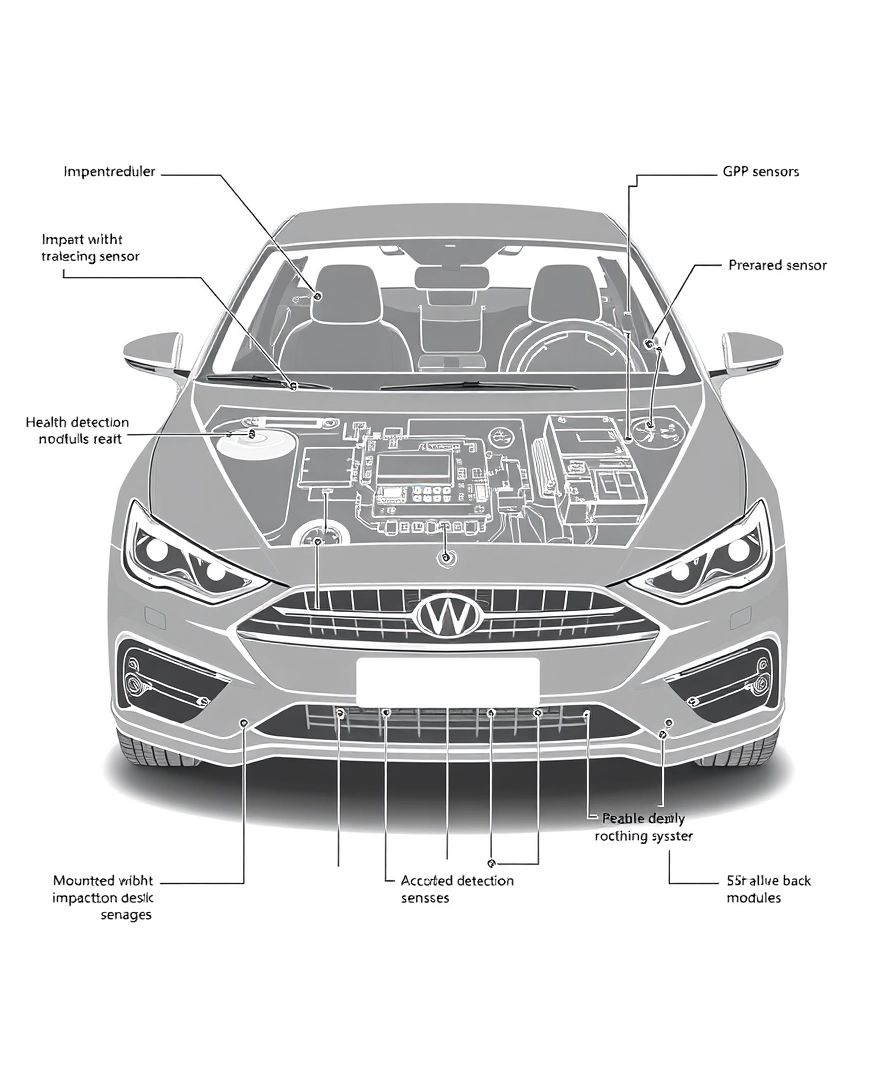由Flux AI Image Generator創建的人工智慧圖像

提示
Create a detailed hardware diagram that clearly depicts, in black and white, the front of a car equipped with an advanced accident alert system, focusing on the hardware components and their specific installation locations. The microcontroller/processor should be shown mounted under the dashboard or in a central control unit. Illustrate the accident detection sensors, including the accelerometer and gyroscope integrated into the vehicle’s central control unit or under the dashboard, and impact sensors placed at strategic points around the vehicle (front, rear, and sides). Depict the communication modules, such as the GSM/LTE module under the dashboard or in the central control unit, and the Wi-Fi/Bluetooth module integrated with the microcontroller. Show the GPS module mounted on the dashboard or integrated into the vehicle’s navigation system. Include health monitoring devices such as wearable health devices worn by the driver on their wrist, an infrared camera mounted on the dashboard facing the driver, pressure sensors integrated into the steering wheel, and a heart rate monitor embedded in the driver’s seat or steering wheel. Display the power supply with the battery pack mounted in the trunk or under the rear seat. Illustrate the user interface components, including the LCD/TFT display mounted on the dashboard within the driver’s line of sight, a buzzer/alarm integrated into the dashboard, and LED indicators positioned on the dashboard. Show the data storage with the SD card module integrated with the microcontroller/processor. Additionally, depict the necessary wiring connecting all components, running neatly through the vehicle. The diagram should clearly depict the placement of each hardware component within the car, providing a comprehensive visual representation of their integration in the accident alert system.
圖像分析
情感分析
應用場景
Accident Alert System Deployment
描述: Advanced Vehicle Safety System Implementation
潛在用法: To integrate the accident alert system into new car models for enhanced safety.
Wearable Health Device Integration
描述: Personal Vehicle Health Monitoring
潛在用法: To monitor driver’s health metrics in real-time during driving.
Improved Accident Response
描述: Emergency Response Coordination
潛在用法: To quickly inform emergency services in case of an accident.
Accident Data Collection
描述: Vehicle Data Analytics
潛在用法: To analyze accident data for improving vehicle safety in future designs.
Real-time Driver Monitoring
描述: Driver Behaviour Analysis
潛在用法: To assess driver behavior and provide alerts for unsafe driving conditions.
技術分析
質量評估: High quality expected as the design aims to enhance vehicle safety through technology.
- Comprehensive integration of health monitoring and accident detection technology.
- Strategic placement of sensors for optimal functionality.
- Use of advanced communication for real-time data sharing.
- Consideration of user interface for driver engagement.
- Clarity in wiring diagram representation
- Detailed specifications for each component
- User interface usability considerations
- Integration of software aspects with hardware
- Environmental impact assessments